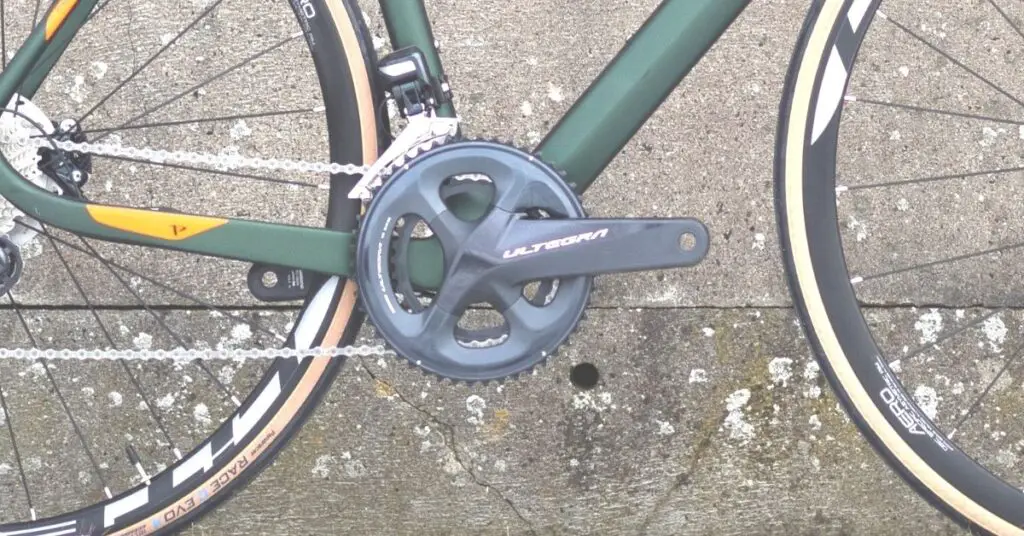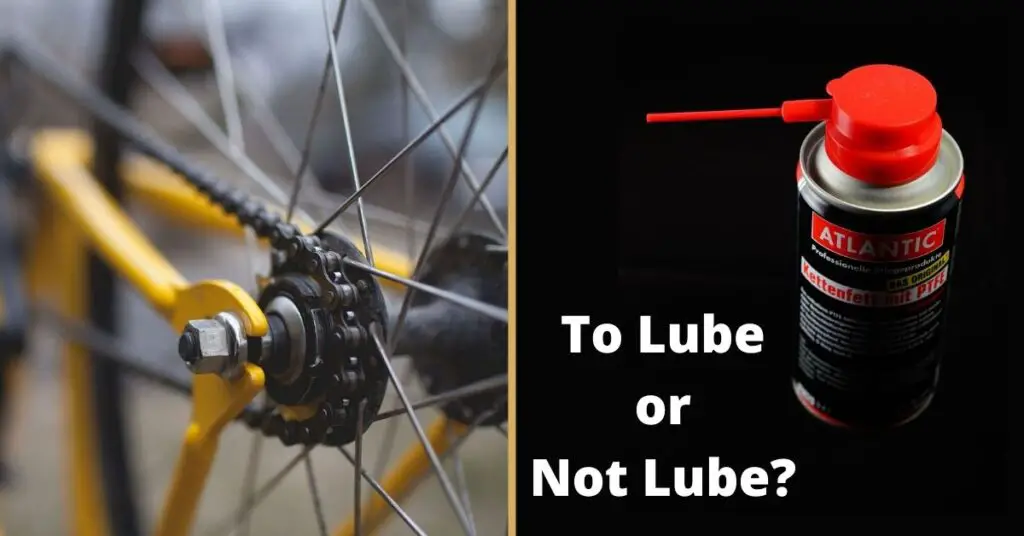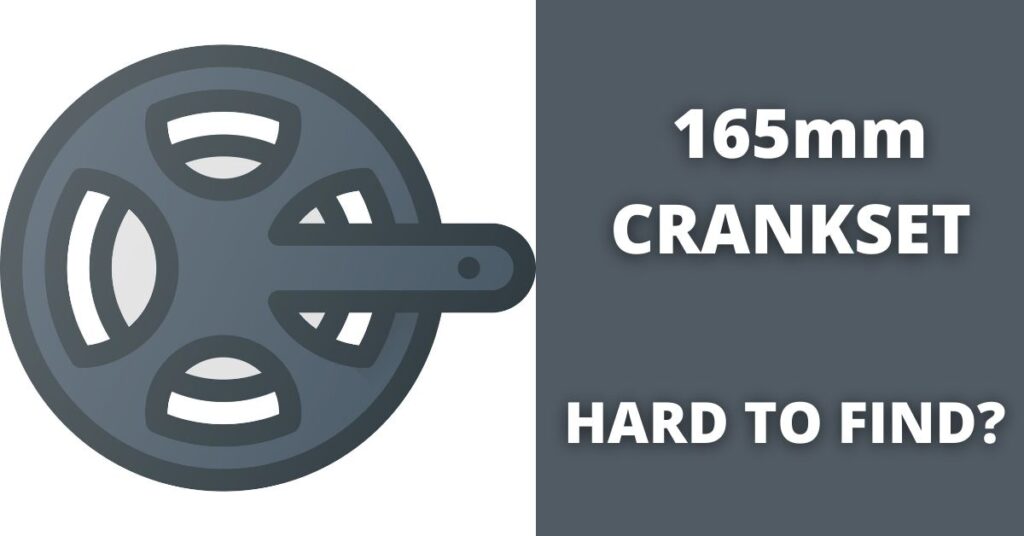The crankset or chainset is the heart of your bike’s drivetrain and it is connected to the pedals to propel the bike forward. Hence, the crankset is directly connected to both the wheels of the bike, the pedals, and the frame.
Generally, bikes can have between one to three chainrings (or sprockets), depending on whether the bicycle has a single, double, or triple chainset.
A good crankset is something that every passionate biker needs for the various value additions that it offers, one of which is comfort. Apart from the many upsides, it has a few downsides to it too. We’ll look at all these in this article.

What Does a Good Crankset Do?
A lot of attributes make up a good crankset. However, it goes without saying that a ‘good’ crank is sometimes relative to the rider. The length of a crankset, its weight, the mileage it can cover, convenience, efficiency, and other potentials all contribute to making a Crankset a ‘good crankset.‘
Cranksets come in a variety of sizes usually between 165mm, 170mm to 190mm.
A crankset is good enough when it suits the rider’s height, matches his cycling style or discipline, and fits his personal preferences for a good riding experience.
For instance, a change in crankset length will definitely influence how pedaling feels and how the saddle fits for the rider, the same way altering the number of teeth on the chainrings makes it either easier or harder to pedal.
While cranksets can be quite generic in nature to fit several bicycles, different bicycles still have peculiar cranks that are more efficient for them.
For instance, the single front chainrings part for mountain bikes are usually attached to the drive-side arm, making it easier to ride on hilly terrains without being clumsy. Most good cranks for this bike also have a better gearing range.
6 Benefits of a Good Crankset
The crankset (Also called chainset) of a bike is made up of chainrings, crank spiders, crank arms that connect the bike to the pedals. A bottom bracket attaches the crankset to the bicycle frame.
Here are a few of the many benefits you can enjoy from a better crankset, regardless of the type of bicycle you ride:
1- Comfortability
A good crankset is comfortable for the rider and does not cause pains and aches in the joints. It is a better fit that matches the rider’s riding needs and physical attributes. With a good crankset, the rider can have a more pleasurable riding experience.
2- Light Weight
In recent productions, good cranksets are made with materials that make them lightweight. Tubular Steel Cranks and Aluminum cranks are made in a way that they are lighter as well as stronger. Therefore, these cranks are not as heavy as they used to be.
Recently, THM introduced Carbon Molded Crank, which just weighs 320g (including spider and axle). (Source)
Upgraded cranks can weigh a couple of hundred grams less than their older counterparts. Moreover, a lightweight crankset is also advantageous to riders who love hilly terrains.
3- Stiffness
A stiff crankset and chainrings make room for more efficiency as they ensure that the bearings and pedals are well aligned. A stiff crankset makes the bike less prone to flexing. Moreover, the stiffer the arms of the cranks, the more the force from pedaling converts into power for the chain.
4- Ease of Pedaling
A good crankset that is appropriate for the rider makes pedaling easier. Shorter cranks are more advisable to use as they involve a shorter pedaling cycle.
5- Adjusted Gear Settings
When a crankset is upgraded, there is a little change in the shifting of gears.
Upgrading to a shorter crank makes shifting easier, while using a longer crank may make gear shifting harder.
6- Aesthetics
A good crankset should be an improvement on older designs. This reflects in quality as much as it reflects in the physical outlook. A good crank upgrade should appear nicer, classier, and sleeker.
3 Cons of Upgrading a Crankset
1- Expense
Upgrading a crankset can come with the downside of being expensive.
It does not matter if you are going for the lower end or the higher end cranks, all are still an expense. This is especially so when the crank specifications you need are on the higher end. Scarce crank lengths also tend to be highly-priced.
Apart from the cost of buying the cranks, if you are using a bike mechanic, you’ll have to loosen your pocket and hence, expand your budget.
2- Scarcity of Desired Length
Crank length is often a bone of contention, specifically shorter cranks. Cranks between 160mm-165mm rarely come with a new bike and are sometimes hard to come by as spare parts. You might find a hard time finding shorter cranks.
3- Change of Other Parts
sometimes when some components of the crankset need a change, the whole crankset ends up being replaced.
This attracts extra expenses to suit the desired purpose.
Buying parts in retail is a lot more expensive than getting them as part of a bike. Manufacturers buy in bulk and don’t pay for retail packaging that you will, to place single orders.
How to Choose a Good Crankset?
The range of gear you need determines the type of crankset you choose. Cranksets come as singlespeed, double and triple cranksets.
However, regardless of your gear needs, here are a couple of rules to help you choose your appropriate crankset:
1- Body Size
To choose the most appropriate crankset, the rider’s body size is considered. Height, hip circumference are aspects of the body that are checked out while selecting a crankset.
For each body type, a crankset that seems to have a relatively shorter arm is the most appropriate.
2- Comfortability
When choosing a crankset, the major concern is how comfortable you will be when riding. Comfortability is relative, can be determined by the rider themselves, there is no one-size-fits-all to comfort.
An uncomfortable crankset affects the rider’s knees, joints, and ability to maneuver through terrains properly.
When considering comfort, the length of the cranks also comes into play. A shorter crank gives the rider a shorter pedaling cycle, resulting in less force required and more room for the joints.
3- Weight
The weight of a crank should influence your choice of cranksets.
Over the years, cranksets have evolved from the era of heavy metal. Nowadays, aluminum and carbon fiber materials are used to make cranks and these materials result in a lighter end product.
Lighter cranks are easier to ride and more efficient.
4- Durability
A durable crankset has the potential to work thousands of miles before looking worn or needing a change.
The durability of a crankset has to do with how strong it can be, and the material a crankset is made from can contribute to its durability. Some cranksets are manufactured with aluminum, steel, or carbon fiber.
Although most modern cranksets forfeit durability for lightweight because of the material they are made from, cranks made from aluminum or steel are stronger and less prone to wear.
5- Compatibility
While a crank might be comfortable, durable, and fitting, it has to be compatible with the bicycle it is to be assembled with.
Some bike manufacturers only create parts for their own products and some other bikes are also manufactured uniquely to only fit custom parts of the manufacturer.
An incompatible crankset will be inefficient and only cause more problems with the bicycle.
When Is the Best Time for an Upgrade?
Wear and damages to a crank are sometimes unnoticeable to those who are not looking, however, a crankset in need of a change gives signals. Your crankset needs a change when the following happens:
1- When You Notice Wear: Cranksets are long-lasting parts of a bicycle and often get overlooked. Although wear and tear are inevitable for cranks, once they are noticed, a replacement must be made to avoid accidents.
Cracks, splits, and other damages on a crankset are a signal warranting immediate change.
2- Damaged Chainrings: Chainrings with sharp edges protruding are a sign of natural or accidential damage that must be attended to. This is usually referred to as fish teeth.
3- Aches and Pains: Cranks that cause knee pains, hip, and other joint pains should not be continued with. A replaced crank with a better length is a healthier choice.
I wrote a detailed guide on Cranks Wearing out and their Maintenance. I am sure it is of interest to you.
Are Longer or Shorter Cranks Better?
Although some people prefer longer cranks for various personal reasons, shorter cranks remain the most recommendable option.
The appropriate length of a rider’s crankset is relative to a lot of factors. Generally, manufacturers make use of a generic measurement for different body sizes. These generalized proportions are then used to install cranks in adult and teen bikes.
However, we don’t all fall into the generic measurement.
The Benefits of Shorter Cranks
There is a common misconception that only short people should use short cranks while taller people use longer ones.
This study (conducted in 2010) showed that Shorter cranks can provide athletes an advantage in the races.
For the rider’s physiology, shorter cranks aid easier movement with less pressure. They are more comfortable and do not need the constant high-low knee movements that longer cranks require.
Moreover, shorter crank arms are proven to create a better riding experience. They are more efficient and scientifically healthier.
Are All Cranksets Compatible?
No. Not all cranksets match any bicycle. Although cranksets are now manufactured with similarities, their compatibility cannot be generalized. Moreover, even cranksets with similar attributes have others that can be considered as more appropriate or compatible.
The new crankset’s compatibility with the other components of the bicycle is a major aspect that is to be kept in mind when upgrading.
Cranks can be compatible with different bottom bracket shells, like the square taper and Shimano Octalink on mountain bikes, and press-fit and external bearings that are on road bikes, as long as the axle has the same diameter and the bottom bracket is compatible with the bike’s frame.
If you check the length of the bottom bracket shell and it is around 68mm or 73mm (it is quite common to come across), it should be compatible.
Furthermore, your chainset ought to be compatible with the rest of its components: your drivetrain, which entails the chain, cassette (rear & front), rear derailleurs, and others.
Which Is Better: High End or Low End?
There is an age-long controversy on what makes a difference between a low-end crankset and a higher-end crankset. However, it is always a matter of choice. Here is a quick tabular comparison:
| Basis | Explanation |
| Weight | More expensive cranks are usually lighter than the low-end options that are made of heavier materials. |
| Shifting & durability | While the expensive ones are likely to shift swiftly, their durability and rigidity might not be as good as low-end metal cranksets. |
| Chainrings (Removable vs. Unremovable) | Most low-end cranks usually have their chainrings attached and are unremovable as they are not expected to be changed, although sometimes the smallest chainring is bolted on and can be changed. Upgrading to a more expensive crank that has removable chainrings will likely result in better shifting. |
| Material Quality | Expensive cranks tend to have better material quality, therefore, components like the chainrings are likely to last longer. |
Conclusion!
So, when working on improving your crankset, be sure to know what you need to go for, and feel free to try out different options before settling.
In essence, a good crank is the only option you are allowed to settle for.
Cheers!




